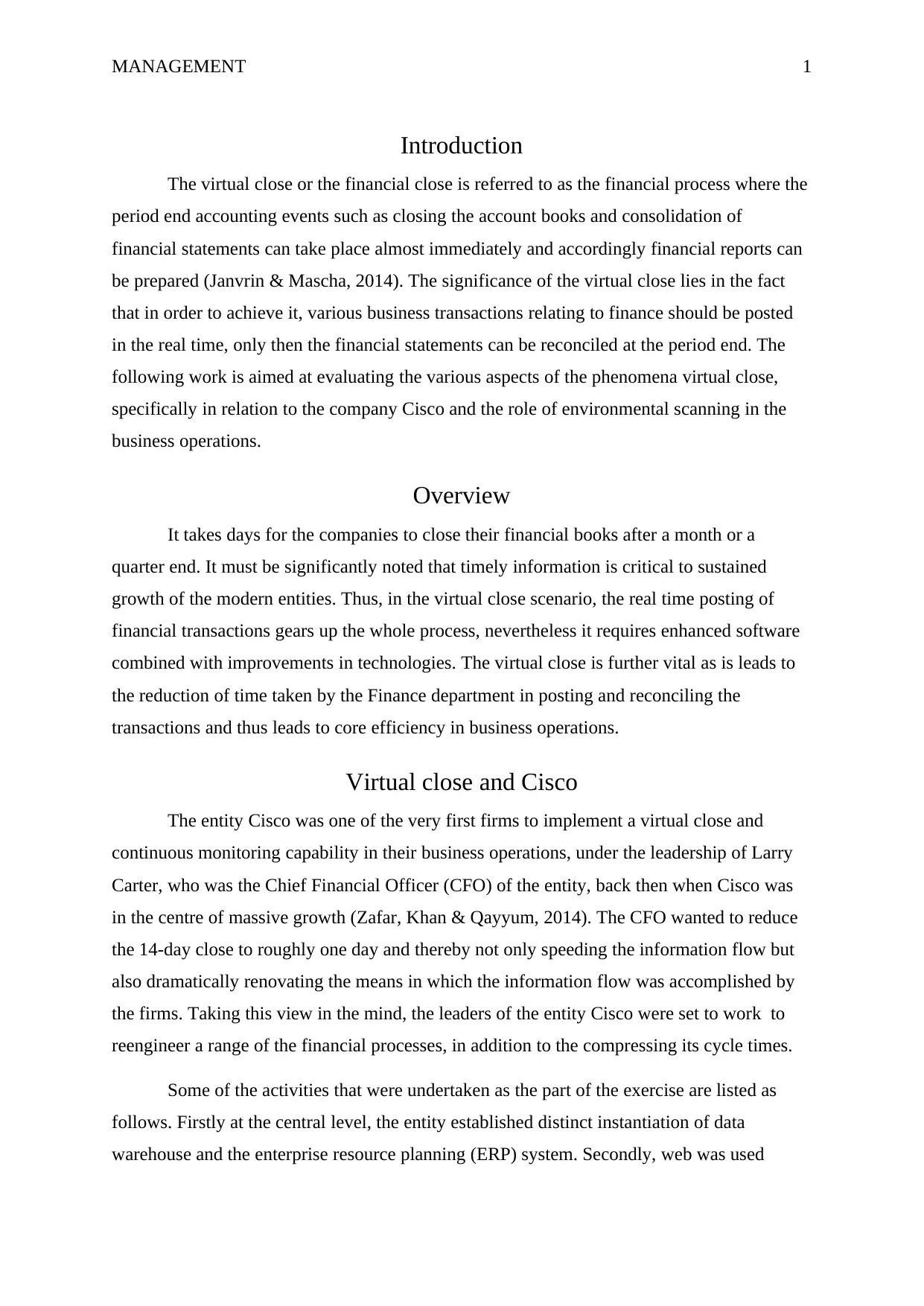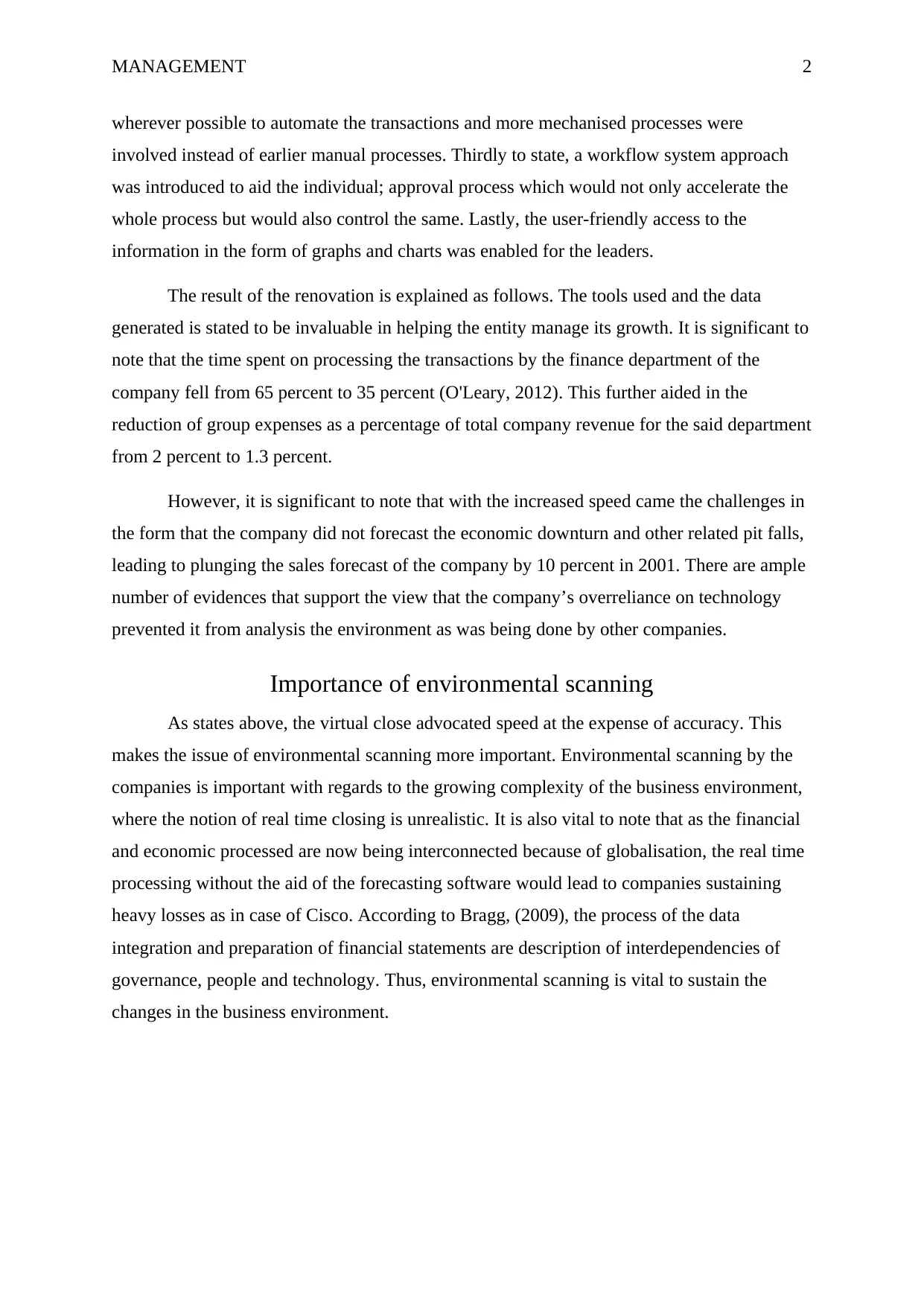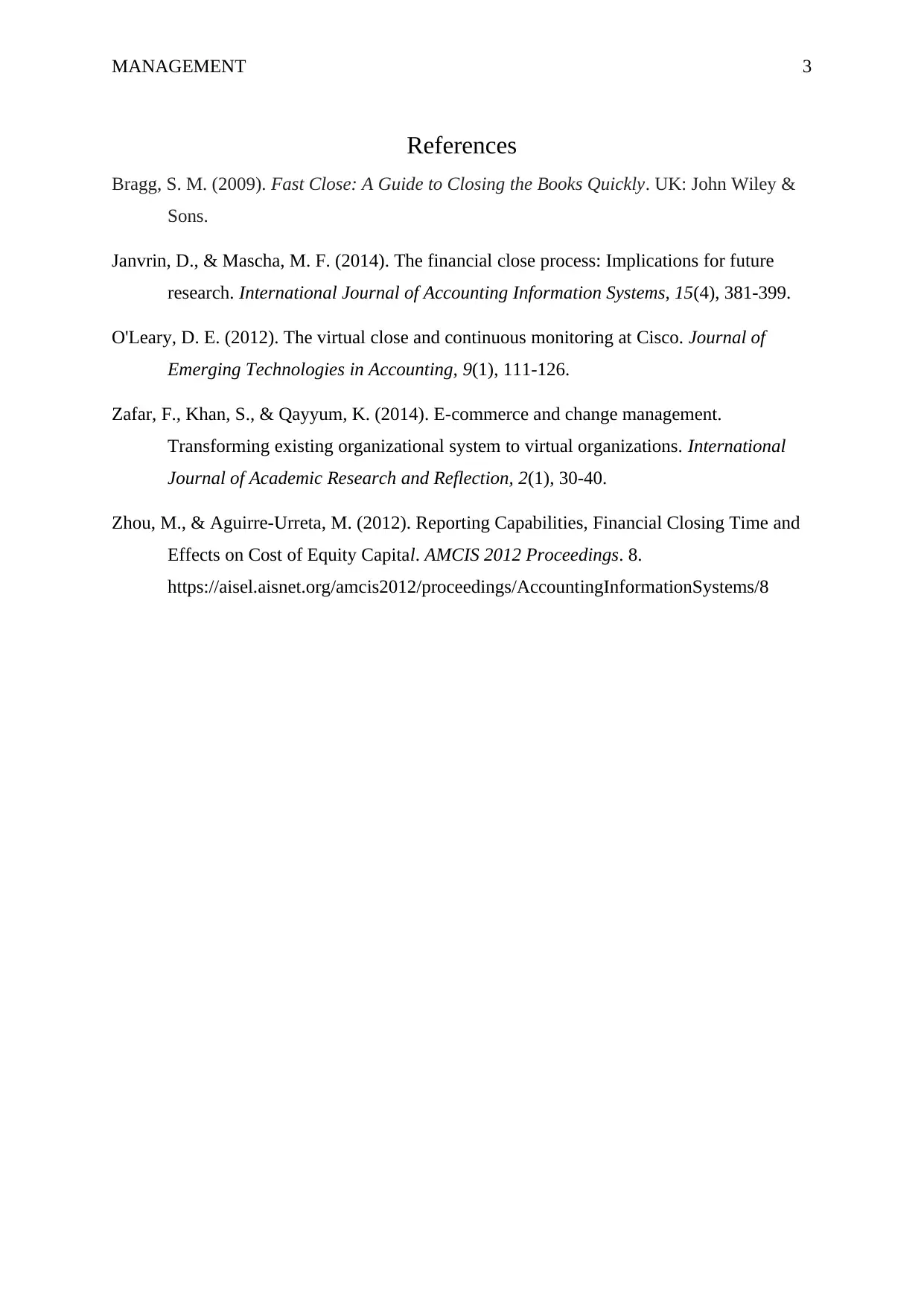Cisco's Virtual Close: Environmental Scanning and Business Operations
VerifiedAdded on 2023/04/08
|3
|860
|178
Report
AI Summary
This report provides an in-depth analysis of the virtual close process, with a specific focus on its implementation at Cisco. The report begins by defining the virtual close as a financial process that allows for immediate closing of account books and preparation of financial statements through real-time posting of financial transactions. It then examines Cisco's adoption of this approach, highlighting the company's efforts to reengineer financial processes and leverage technology to reduce closing times. The report further discusses the importance of environmental scanning in the context of virtual close, emphasizing the need for companies to analyze external factors to mitigate risks associated with over-reliance on technology and rapid financial reporting. The report concludes by underscoring the significance of integrating environmental scanning into virtual close strategies to ensure accurate financial forecasting and sustainable business operations. The report uses various sources to support its findings.
1 out of 3








![[object Object]](/_next/static/media/star-bottom.7253800d.svg)